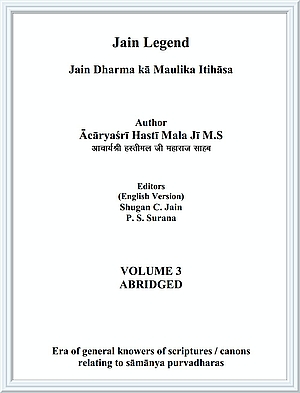At the time of the first division (around V.N. 606 or so) of Lord Mahāvīra's unified congregation, it was trifurcated into Digambara, Śvetāmbara and Yāpanīya (Gopya or Pulīya) congregation or sects. In the light of record available on the events which occurred between V.N.606-9, it can be inferred that Yāpanīya congregation came into existence at that time only.
Major beliefs of Yāpanīya congregation
From the holy texts available now which belong to Yāpanīya congregation, whatever major beliefs which Yāpanīya Ācāryas preached can be enumerated as follows?
- Most of their beliefs conform to Śvetāmbara beliefs.
- Yāpanīya congregation considered all holy texts of Śvetāmbara tradition, such as Āvaśyaka, Chedasūtra, Niryuktis, Daśavaikālika and venerated by them till now etc, as valid holy texts,
- They also accepted liberation of women in the same life and liberation of omniscient as per Śvetāmbara tradition.
- Yāpanīya congregation allowed possession of bare minimum religious implements such as clothes, blanket, towel to wipe their feet, pots for food etc by their monks.
- Description in verse of the holy death of monk Metārya in Bhagavatīsūtra by their Ācārya Śivārya in Vikram 5th century are similar to what is given in Śvetāmbara scriptures
- They used to worship the three jewels of the path of purification, gave discourses on Kalpasūtra, and accepted liberation of women in same life, accepting food by omniscient Lord and liberation of the followers of other religious traditions as well as of clothed laity.
- Śvetāmbara Ācārya Guņa Ratna, while writing commentary on 'ṣaḍarśanasamuccaya' of Ācārya Hari Bhadra, highlighted some characteristics of Yāpanīyamonks as follows. 'These monks stay nude, accept food in the fold of their palms, keep whiskbrooms made of peacock feather, worship nude idols and bless the householders who venerate them by saying 'dharmalābha''.
- Till Vikram 5th century, monks of Yāpanīya congregation used to carry dead body of their fellow monks on their shoulders to a forest and leave it there. All such details indicate that Yāpanīya congregation was closer to Śvetāmbara tradition than Digambara tradition.
 Acharya Hasti Mala
Acharya Hasti Mala
